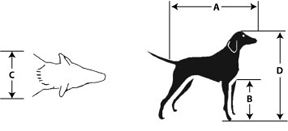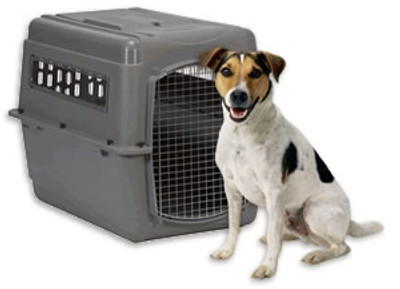Pet Cargo Crates - How to Choose the Right One
Posted by Susan Smith on on 27th Apr 2017
Choosing the right pet cargo crate could mean being turned away at check-in.
When it comes time to fly with a pet that is too large to fit in the cabin, no one likes the option of transporting a pet in the cargo hold. There are many reasons why this must be done and pet owners should realize that they can contribute to their pet's safety when traveling in the cargo hold.
The first thing you can do is to get a sturdy, well built pet crate and acclimate your pet to it. This will be your pet’s home on their journey, their safe place. You want to be sure that the crate is the right size and that it is constructed securely. This is not the time to cut corners; get the best crate you can afford for your own piece of mind and for the safety of your pet.
Airline compliance is extremely important. Pass by those crates with plastic doors or side clips. Wheels are of no benefit either. The airlines will require you to remove or disable the wheels on your pet's cargo crate.
Here are some of the requirements for airline compliant crates:
- Airline pet crates must made of fiberglass, metal, rigid plastics, weld metal mesh, solid wood or plywood (although some airlines like KLM and Air France will not accept wooden crates.) They should not be collapsible.
- The floor of the crate must be solid and leakproof.
- The crate door must have a secure, spring loaded, all around locking system
with the pins extending at least 1.6 cm (5/8 in) beyond the horizontal
extrusions above and below the door. Doors must be constructed of heavy plastic, welded or cast metal strong enough so that a pet cannot compromise their strength. (We recommend metal.) The door must be nose and paw proof so as not to injure your pet. - It must have ventilation on at least one end (door) and 2 sides for domestic flights and one end and 3 sides for international flights.
- Plastic fasteners are fine for some of the airlines, but many airlines are requiring metal hardware and cable ties on every corner of the crate.
- Your pet's crate should be marked with LIVE ANIMAL stickers, your pet's original documentation, owner contact information, and a Shipper's Declaration when your pet was last given water and fed.
- Your pet needs to be able to stand up and turn around in its carrier. Measuring your pet is very important and here is what you need to do: Take a string and measure your pet 3 ways: from top of head (or tip of ears if they are erect) to the ground when standing (A) - from tip of nose to base of tail (B) and across the shoulders (C).
 A= length of animal from nose to root of tail
A= length of animal from nose to root of tail
B = height from ground to elbow joint
C = width across shoulders
D = height of animal in standing position (top of head for pets with non-erect ears - from tip of ears for pets with erect ears)
The length of the kennel must be equal to
A + 1/2 B. (domestic flights) A+B (International flights - United Airlines)
The width of the kennel must be equal to Cx2 (domestic flights) (C+1 in) x 2 (international
flights - United Airlines)
The height of the kennel (top flat or arched) must be equal to D
(domestic flights)
D+3 in (international flights - United Airlines).
Get your pet's crate as early as possible and work hard at getting them used to it. Put their bed in it and encourage them to use it without the top portion. After several weeks, put the top portion of the crate on and keep the door open. Get them out of their environment in their crate and take them somewhere fun in the car (dog park, Grandma's, etc.). This will be their home away from home when they travel.
We recommend Petmate SkyKennel airline pet crates because they are the best crates on the market for transporting non-aggressive dogs and cats.
Already have your pet's crate? Check out our Update Your Pet Crate Kit. It contains accessories like LIVE ANIMAL stickers, cable ties, water/food bowls and much more. Here are more of our crate accessories.
Find more information on IATA requirements for pet cargo crates.

